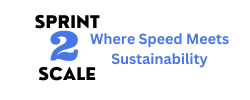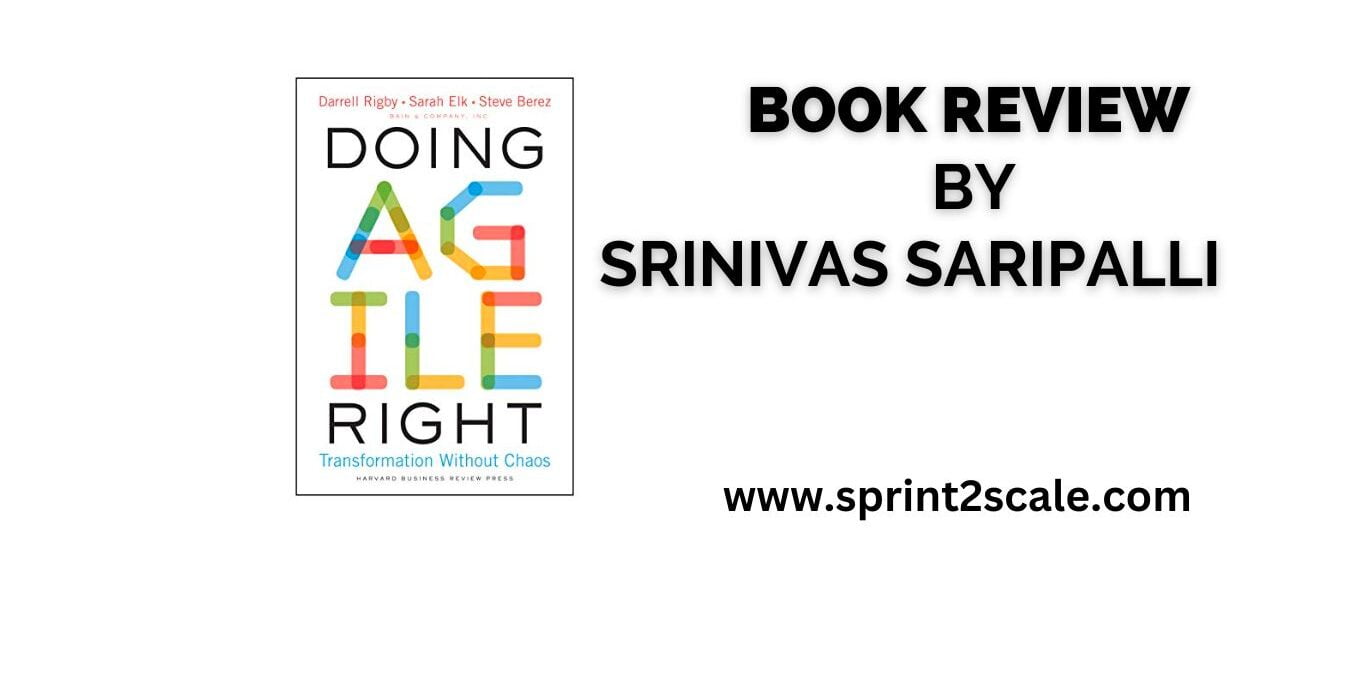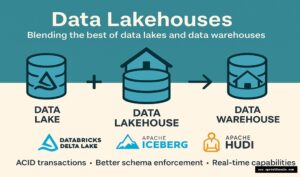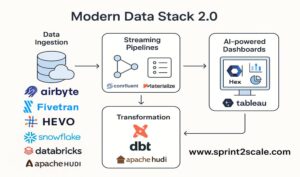Title: Doing Agile Right: Transformation Without Chaos
Author: Darrell K. Rigby, Sarah Elk, and Steve Berez
High Level Review
“Doing Agile Right” is a comprehensive and insightful guide written by Darrell K. Rigby, Sarah Elk, and Steve Berez, that navigates the complex landscape of Agile transformation. Published in 2020, the book stands out for its practical approach to implementing Agile methodologies in organizations without succumbing to chaos. Rigby, Elk, and Berez draw upon their extensive experience to provide a roadmap for businesses seeking to embrace agility in a meaningful and sustainable way.
The book is structured in a way that caters to both Agile novices and seasoned practitioners. It begins by demystifying the fundamental principles of Agile, explaining how it goes beyond a set of practices to become a mindset and a cultural shift. The authors use real-world case studies to illustrate successful Agile transformations, highlighting the diverse industries and companies that have benefited from adopting Agile methodologies.
One of the strengths of “Doing Agile Right” lies in its emphasis on the need for leadership commitment. The authors argue that Agile transformation is not just a bottom-up change but requires active support and involvement from top-level executives. This stands in contrast to the common misconception that Agile is a grassroots movement. By presenting compelling examples of organizations where leadership played a pivotal role in Agile success, the book makes a persuasive case for the top-down approach to Agile transformation.
The book also addresses the pitfalls and challenges organizations might face during the Agile journey. It tackles the common misconception that Agile is a one-size-fits-all solution, emphasizing the importance of tailoring Agile practices to fit the unique needs and context of each organization. The authors explore various Agile frameworks, such as Scrum, Kanban, and SAFe, shedding light on their strengths and potential limitations.
One of the standout features of “Doing Agile Right” is its focus on measurement and metrics. The authors stress the importance of establishing clear metrics to gauge the success of Agile initiatives. By providing practical advice on defining and tracking key performance indicators, the book equips readers with the tools needed to assess the impact of Agile transformations on their organizations.
The writing style is accessible, making complex concepts understandable for a broad audience. The inclusion of anecdotes and case studies adds a human touch, making the book relatable and engaging. The authors also anticipate and address potential objections or skepticism about Agile, further enhancing the book’s credibility.
While the book is a valuable resource for organizations looking to embark on an Agile journey, it is not without its limitations. Some readers may find the focus on large enterprises and the scarcity of examples from smaller businesses a drawback. Additionally, the rapidly evolving nature of the Agile landscape means that certain details may become outdated over time.
In conclusion, “Doing Agile Right” is a must-read for anyone involved in or considering Agile transformation. Rigby, Elk, and Berez have succeeded in creating a practical guide that balances theory with real-world application. Whether you are a leader driving change or a team member navigating the complexities of Agile, this book provides actionable insights and a roadmap for achieving successful Agile transformation without succumbing to chaos.
Detailed Review
A Triumvirate of Expertise
The authors, each a luminary in their respective fields, bring a triumvirate of expertise to the table. Rigby, a partner at Bain & Company, Elk, a partner at Bain & Company and leader of the firm’s Global Agile practice, and Berez, a partner at Bain & Company and a leader in the Agile space, form an alliance that promises not just insights but actionable strategies for Agile success.
Navigating the Agile Landscape
Practical Insights for Transformation
The beauty of “Doing Agile Right” lies in its practicality. Unlike theoretical treatises, the book offers real-world insights into the challenges organizations face when adopting Agile methodologies. Rigby and team delve into the nuances of Agile transformation, providing readers with a roadmap that goes beyond buzzwords, focusing on tangible, sustainable change.
From Principles to Practice
The book brilliantly bridges the gap between Agile principles and their practical application. By dissecting case studies and drawing from their extensive experience, the authors elucidate how Agile isn’t just a set of rules but a mindset shift. From leadership dynamics to team structures, “Doing Agile Right” ensures that readers understand the holistic nature of Agile transformation.
Deconstructing Agile Myths
Challenging the Status Quo
One of the standout features of this book is its courage in challenging prevalent Agile myths. Rigby and team fearlessly question misinterpretations and misguided practices. By deconstructing these myths, the authors empower readers to embrace Agile not as a one-size-fits-all solution but as a customizable framework that aligns with organizational needs.
Pitfalls and Pragmatism
“Doing Agile Right” doesn’t shy away from addressing the pitfalls organizations might encounter on their Agile journey. Instead of sugar-coating challenges, the authors provide pragmatic solutions, turning potential stumbling blocks into stepping stones for growth. It’s a refreshing departure from books that oversimplify the Agile transformation process.
Beyond Buzzwords: The Heart of Agile
Cultural Transformation
At its core, “Doing Agile Right” advocates for a cultural transformation. It’s not just about adopting Agile practices; it’s about fostering a culture that thrives on adaptability, collaboration, and continuous improvement. The book serves as a rallying cry for organizations to go beyond the superficial adoption of Agile and dive deep into the cultural shift it demands.
Leadership as the Keystone
In the Agile ecosystem, leadership isn’t just a role; it’s the keystone that holds the entire structure together. The authors underscore the pivotal role of leadership in fostering an Agile culture. They dismantle the notion that Agile is solely a bottom-up approach, emphasizing the symbiotic relationship between leadership and grassroots initiatives.
A Call to Action
For Whom is This Book?
“Doing Agile Right” is not just for Agile enthusiasts or practitioners; it’s a call to action for leaders, executives, and change-makers. Whether you’re embarking on an Agile transformation or seeking to optimize your current Agile practices, this book is a must-read.
Final Verdict: A Manifesto for Agile Excellence
In the cacophony of Agile literature, “Doing Agile Right” stands out as a manifesto for Agile excellence. Rigby, Elk, and Berez offer not just a book but a beacon for organizations navigating the complex waters of Agile transformation. It’s a call to embrace Agile not as a methodology but as a mindset—a mindset that can redefine the future of organizational success.







No Comment! Be the first one.